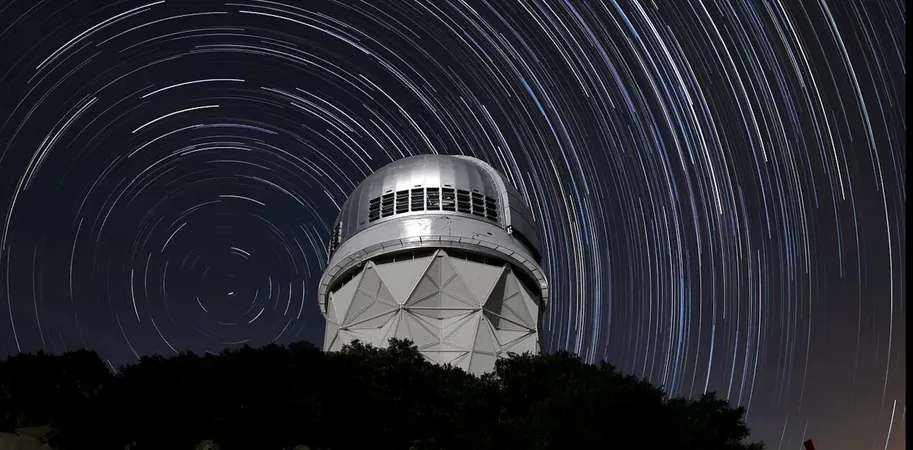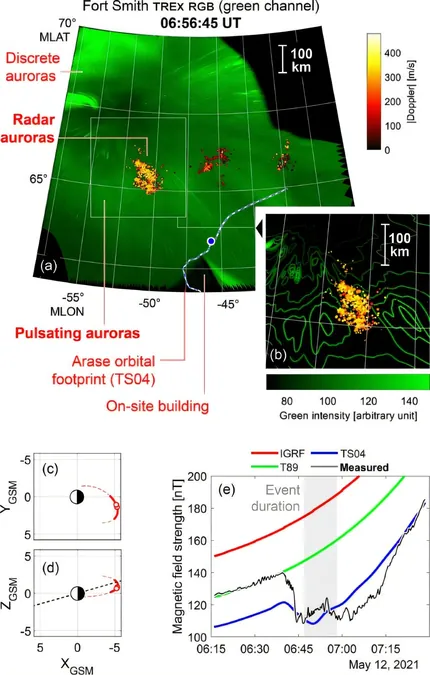
China's Bold Plan to Seek Extraterrestrial Life Amid NASA Budget Cuts
2025-04-09
Author: Sarah
China's Ambitious Space Exploration Roadmap
In a groundbreaking move, China has revealed an extensive roadmap for planetary exploration focused on finding extraterrestrial life. Launched by the Deep Space Exploration Laboratory (DSEL), this forward-thinking plan aims to target crucial destinations within our solar system.
Key Missions on the Horizon
Launching in 2028, the Tianwen-3 mission will embark on a quest to retrieve samples from Mars, specifically searching for evidence of past or present life. Following this, the Tianwen-4 mission in 2029 will explore Jupiter and its moon Callisto, with a Venus mission slated for 2033 to collect atmospheric samples and analyze its unique microenvironment. Furthermore, a Mars science station set for about 2038 will focus on long-term environmental studies. The crowning jewel of this plan is a proposed nuclear-powered expedition to Neptune around 2039, designed to study its mysterious moon Triton, known for signs of cryovolcanism.
NASA Faces Cuts Amid Booming Commercial Space Sector
As China gears up for a series of impressive space missions, NASA finds itself in a precarious position, grappling with potential budget cuts of up to 50% in its upcoming fiscal proposal. Rumors of layoffs are swirling, presenting a stark contrast to China's enthusiastic approach.
China’s Commercial Space Expansion
On the commercial front, China's space sector showcases its ambitions with innovative projects. The recently established company, Beijing Ziwei Yutong Technology Co., Ltd. (AZSpace), aims to conduct its first crewed orbital flight tests by 2027 or 2028, using its B300 spacecraft. Their plans include an advanced spacecraft, DEAR-5, launching soon after.
Additionally, Beijing Lanying Xingtong Technology Co., Ltd. (Bluelink Satcom) is making strides in developing a satellite network capable of detecting Bluetooth signals from space. Their launch of China's first Bluetooth satellite is set for mid-2025, promoting IoT connectivity in an unprecedented way. These ventures are bolstered by governmental support to nurture a vibrant commercial space ecosystem.
Geostationary Developments Prompt Security Concerns
In the realm of geostationary satellites, China's recent activity is raising eyebrows among international observers. The launches of classified satellites TJS-15 and TJS-16 display advanced capabilities that hint at clandestine missions. The TJS-15 satellite, launched on March 9, showed unusual activity shortly after reaching geostationary orbit, suggesting potential inspection capabilities.
Later, the TJS-16 satellite launched on March 29, labeled as a communication technology experiment, may conceal advanced functionalities related to signals intelligence. With connections hinted at in the mission patches, observers are left speculating about China's growing prowess in space.
A New Era in Space Exploration?
As China furthers its exploration initiatives and commercial ambitions, the landscape of space research is on the brink of transformation. With NASA under scrutiny and China charging ahead, it raises larger questions about the future of space exploration and the search for life beyond our planet.




 Brasil (PT)
Brasil (PT)
 Canada (EN)
Canada (EN)
 Chile (ES)
Chile (ES)
 Česko (CS)
Česko (CS)
 대한민국 (KO)
대한민국 (KO)
 España (ES)
España (ES)
 France (FR)
France (FR)
 Hong Kong (EN)
Hong Kong (EN)
 Italia (IT)
Italia (IT)
 日本 (JA)
日本 (JA)
 Magyarország (HU)
Magyarország (HU)
 Norge (NO)
Norge (NO)
 Polska (PL)
Polska (PL)
 Schweiz (DE)
Schweiz (DE)
 Singapore (EN)
Singapore (EN)
 Sverige (SV)
Sverige (SV)
 Suomi (FI)
Suomi (FI)
 Türkiye (TR)
Türkiye (TR)
 الإمارات العربية المتحدة (AR)
الإمارات العربية المتحدة (AR)